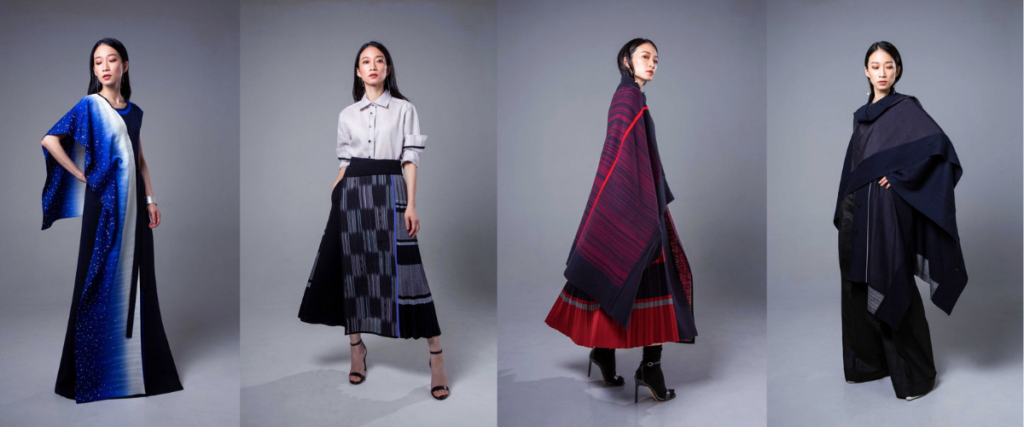Japanese fashion designer Shunsuke Teranishi’s Arlnata blends traditional kimono silk with western-style apparel.
Nowadays, the kimono, a colourful and elegant Japanese traditional garment, is worn primarily to celebrate special ceremonies and traditional Japanese events. However, prior to the 20th century, the kimono was once worn daily by Japanese men and women. With a country-wide shift to Western influence post World War II, kimonos were soon replaced with Western-style clothing.
Ever since, retail sales performance has been plunging since the 1970s. According to Statista, the decrease in retail sales of kimonos in Japan from 2010 to 2020 is estimated to be around JP¥72 billion (US$655 million).
This has also impacted kimono craftsmen who specialise in the production of specific silk materials used in kimono designs. With this shrinking market, wages slowly reduced, decreasing industry opportunities for younger generations. Surviving in the regular cotton kimono industry was also a struggle, with many factories having either closed down, or changed direction to producing denim. As a result, silk kimonos are now only worn in traditional Japanese cultural settings.

While the popularity of the kimono may have been washed out by Western influences, many fashion designers work to maintain kimono culture. One influential figure is Shunsuke Teranishi, a Japanese fashion designer who has worked for apparel brands in Tokyo, Paris, and Milan. In 2016, Teranishi discovered ushikubi tsumugi, a fascinating form of kimono fabric derived from cow’s neck silk.
The Japanese designer fell in love with the vibrant colours and detailed weaving of the Japanese kimono silk, which was then being exhibited in Japan’s Hakusn Koubou museum. While observing the details and learning the origin of the ushikubi tsumugi silk, Teranishi became more aware of the struggles of kimono craftsmen and downfall of the kimono industry in modernity.
Inspired by the exhibition, Teranishi was determined to reignite the international recognition of the kimono and silk-making. Along with his wife, Chien-tsu Chen, a Taiwanese fashion designer, they began their experimentation with Japan’s three most-recognised indigenous silk materials; Ushikubi Tsumugi, Yuki Tsumugi and Oshima Tsumugi. They found these three woven silks the most suited for kimono production.

After much design drafting and experimentation, the designer couple have now launched their ready-to-wear brand, Arlnata. Arlnata carries a unique mixture of western-style garments but made from silk-woven kimono fabric. In December 2018, the couple relocated to Japan, and presented Arlnata’s first collection in April 2019.
The brand is anticipated to showcase a new collection in late August at Tokyo’s Isetan Shinjuku store. In addition, in 2022, Arlnata’s garments will be held in an exhibition in Kagoshima. The brand aims to build a luxury lifestyle brand, competing with industry leaders such as Hermes.
Featured banner image credit: arlnata.com
Related Articles:
Japan’s Online Fashion Revolution





